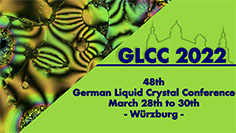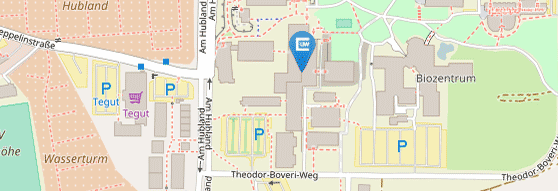Liquid Crystals from Synthesis to Application
Organization: Prof. Dr. Matthias Lehmann (JMU Würzburg, Institut for Organic Chemistry)
Rachel Steinhaus (JMU Würzburg, Faculty of Chemistry and Pharmacy)
Course Dates: February 21-28, 2022
Conference Dates: March 28-30, 2022
Application Deadline: August 31, 2021
Place: The course will take place via Zoom. The conference is tentatively set to take place in person at the Julius-Maximilian University in Würzburg, though this is dependent on restrictions relating to COVID-19. The final exam will take place at the conference, either in person or, if necessary, with an online alternative.
Level: Master Class for Chemistry Students at a Masters or Ph.D. level who intend to participate in the German Liquid Crystal Conference in Würzburg in March 2022. Students will receive a participation certificate upon completion of the course with a list of the total work load and competencies. Please check with your home institution if this can be recognized for credit.
Course Outline: Liquid Crystal Meetings gather researchers from a large range of different disciplines. Often young physicists are overwhelmed by organic chemists presenting their synthesis, the synthetic chemists possess only limited understanding on theory, elastic, polar, optical properties of liquid crystals. Thus during the presentations of the meeting many young scientists cannot completely follow the talks of possible collaboration partners. Discussions about joint projects might be therefore sometimes not as profound as they would need to be. Scientists need generally a deeper understanding of the topics treated by the colleagues of the community and this is especially true for the LC community which is so multidisciplinary! This is the reason why we organize a university module for the young participants of the GLCC 2022 in Würzburg. It should enable the young researchers of the community to follow most of the talks with a deeper understanding. Moreover, the course will help for the preparation of the conference contributions. Besides practical exercises, the final exam will be the conference contribution either with a poster including a poster appetizer or a talk. These contributions will be evaluated by the lecturers.
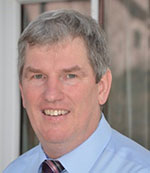
Matthias Lehmann is a Professor in Soft Organic Materials and Liquid Crystals at the University of Würzburg. After studies in Chemistry (University of Mainz, PhD degree 1999) and two postdoctoral positions at the University of Zaragoza and the Free University of Brussels, he started his independent career at the Chemnitz University of Technology (2003). His research interests focus on synthesis, self-assembly, and application of complex soft matter with liquid-crystalline properties as new emerging materials, with emphasis on comprehensive structural investigations by X-ray scattering, modelling, and simulation.
Key Publications M. Lehmann, M. Baumann, M. Lambov, A. Eremin Parallel polar dimers in the columnar self-assembly of umbrella-shaped subphthalocyanine mesogens Adv. Funct. Mater. 2021, DOI. M. Lehmann, M. Dechant, D. Weh, E. Freytag Metal Phthalocyanine-Fullerene Dyads: Promising Lamellar Columnar Donor-Acceptor Liquid Crystal Phases ChemPlusChem 2020, 85, 1934-1938. M. Lehmann, M. Dechant, M. Holzapfel, A. Schmiedel, C. Lambert Fullerene-Filled Liquid-Crystal Stars: A Supramolecular Click Mechanism for the Generation of Tailored Donor-Acceptor Assemblies Angew. Chem. Int. Ed. 2019, 58, 3610-3615. M. Lehmann, M. Dechant, M. Hügel, N. Scheuring, T. Ghosh Fullerene-Filled Stilbene Stars: The Balance between Isolated C60 Helices and 3D Networks in Liquid-Crystal Self-Assemblies Chem. Eur. J. 2019, 58, 3352-3361. M. Lehmann, M. Dechant, M. Lambov, T. Gosh Free Space in Liquid Crystals - Molecular Design, Gerneration, and Usage Acc. Chem. Res. 2019, 52, 1653-1664. M. Lehmann, S. Maisch, N. Scheuring, J. Carvalho, C. Cruz, P. J. Sebastião, R. Y. Dong From molecular biaxiality of real board-shaped mesogens to phase biaxiality? On the hunt for the holy grail of liquid crystal science Soft Matter 2019, 15, 8496-8511.
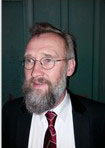
Heiner Detert received his diploma and doctoral degree in organic chemistry from the Johannes Gutenberg-University Mainz in 1991. After postdoctorals stays at OSU Columbus/Ohio and FU Berlin, he returned to Mainz for habilitation (2001) where he was appointed apl. Prof. in 2009. Heterocycles are in the center of his main research activities: luminescent sensors and functional dyes, discotic liquid crystals, alkaloids, furthermore chlorinated and strained hydrocarbons.
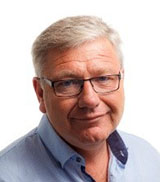
Frank Gießelmann studied chemistry and received his doctoral degree from Clausthal University of Technology in 1992. During his post-doctoral studies on phase transitions in liquid crystals, he worked with Peter Zugenmaier (Clausthal), Woyciech Kuczynski (Polish Academy of Sciences), and Sven T. Lagerwall (Chalmers University of Technology, Sweden). In 1998 he finished his habilitation and received the venia legendi in Physical Chemistry. Since 2002, he is Professor of Physical Chemistry at the University of Stuttgart, where he also joined the International Max Planck Research School on Advanced Materials. His foremost research interest is the liquid crystalline state of matter including the structure and dynamics, the phase transitions, the chirality effects and the electrical/optical properties of both thermotropic and lyotropic liquid-crystalline phases.
Key Publications S. Dieterich, F. Stemmler, N. Preisig, and F. Giesselmann Micellar Lyotropic Nematic Gels Adv. Mater. 2021, 33, 2007340. C. F. Dietrich, P. J. Collings, T. Sottmann, P. Rudquist, and F. Giesselmann Extremely Small Twist Elastic Constants in Lyotropic Nematic Liquid Crystals Proc. National Acad. Sci. 2020, 117, 27238. J. R. Bruckner, J. H. Porada, C. F. Dietrich, I. Dierking, and F. Giesselmann A Lyotropic Chiral Smectic C Liquid Crystal with Polar Electrooptic Switching Angewandte Chemie Int. Ed. 2013, 52, 8934. J. Lagerwall, G. Scalia, M. Haluska, U. Dettlaff‐Weglikowska, S. Roth, and F. Giesselmann Nanotube Alignment Using Lyotropic Liquid Crystals Adv Mater 2007, 19, 359. J. P. F. Lagerwall and F. Giesselmann Current Topics in Smectic Liquid Crystal Research Chemphyschem 2006, 7, 20.

Jan Lagerwall (M.Sc. Physics 1997; Ph.D. Materials Science, 2002) is professor in physics at University of Luxembourg. His research focuses on soft matter physics, chemistry and materials science, connecting liquid crystals with many other fields, from fiber spinning and microfluidics to art, architecture and security. The motivation ranges from the scientific beauty to the diverse application opportunities arising through cross fertilization with other disciplines. As postdoctoral researcher, Jan worked with N.A. Clark (Boulder), G. Heppke (Berlin) and F. Giesselmann (Stuttgart). He previously held group leader positions at Martin Luther University Halle-Wittenberg (Germany) and Seoul National University (Korea).
Key Publications Geng, Y., Kizhakidathazhath, R. & Lagerwall, J. P. F. Encoding Hidden Information onto Surfaces Using Polymerized Cholesteric Spherical Reflectors Adv. Funct. Mater. 2021, 31, 2100399. Honorato-Rios, C. & Lagerwall, J. P. F. Interrogating helical nanorod self-assembly with fractionated cellulose nanocrystal suspensions Communications Materials 1 2020, artno. 69. Kizhakidathazhath, R. et al. Facile Anisotropic Deswelling Method for Realizing Large‐Area Cholesteric Liquid Crystal Elastomers with Uniform Structural Color and Broad‐Range Mechanochromic Response Adv. Funct. Mater. 2020, 30, 1909537. Jampani, V. S. R. et al. Liquid crystal elastomer shell actuators with negative order parameter Science Advances 5 2019, eaaw2476. Schwartz, M. et al. Cholesteric Liquid Crystal Shells as Enabling Material for Information-Rich Design and Architecture Adv. Mater. 30 2018, 1707382. Reyes, C. G., Sharma, A. & Lagerwall, J. P. F. Non-electronic gas sensors from electrospun mats of liquid crystal core fibers for detecting volatile organic compounds at room temperature Liq. Cryst. 43 2016, 1986-2001.
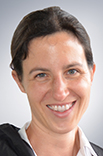
Alexandra Friedrich studied Mineralogy and Crystallography at the University of Vienna (Austria) and received her doctoral degree at the ETH Zürich (Switzerland) in 2002. After a post-doc at CEA Saclay (France) she was a post-doc and principal investigator at the Goethe-University Frankfurt am Main, where she finished her habilitation in 2017. Since 2015 she is academic staff member at the Institute of Inorganic Chemistry at the University of Würzburg, where she is responsible for single-crystal X-ray diffraction and teaching crystallography. Her research focuses on high-pressure crystallography studying phase transitions, spin transitions, intermolecular interactions, and polymerization reactions.
Key Publications A. Friedrich, I. E. Collings, K. F. Dziubek, S. Fanetti, K. Radacki, J. Ruiz-Fuertes, J. Pellicer-Porres, M. Hanfland, D. Sieh, R. Bini, S. J. Clark, T. B. Marder Pressure-induced polymerization of polycyclic arene–perfluoroarene cocrystals: Single crystal X-ray diffraction studies, reaction kinetics, and design of columnar hydrofluorocarbons J. Am. Chem. Soc. 2020, 142, 18907–18923. A. Friedrich, B. Winkler, W. Morgenroth, A. Perlov, V. Milman Pressure-induced spin collapse of octahedrally coordinated Mn3+ in the tetragonal hydrogarnet henritermierite, Ca3Mn2[SiO4]2[O4H4] Phys. Rev. B 2015, 92, 014117. A. Friedrich, B. Winkler, W. Morgenroth, J. Ruiz-Fuertes, M. Koch-Müller, D. Rhede, V. Milman Pressure-induced spin collapse of octahedrally coordinated Fe3+ in Ca3Fe2[SiO4]3 from experiment and theory Phys. Rev. B 2014, 90, 094105. A. Friedrich, B. Winkler, E. A. Juarez-Arellano, L. Bayarjargal (Review:) Synthesis of binary transition metal nitrides, carbides and borides from the elements in the laser-heated diamond anvil cell and their structure-property relations Materials 2011, 4, 1648–1692.
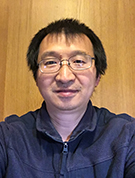
Xiangbing Zeng received his PhD from the Department of Materials Science and Engineering, University of Sheffield in 2000. He became a Reader in Polymers and Liquid Crystals at the same Department in 2018. His main research interest has been in the study of the structure and phase behaviour of complex liquid crystals and supramolecular assemblies, using a combination of diffraction, spectroscopy and microscopy methods. He has published over 120 research papers with an h-index of 38. The many structures of thermotropic liquid crystals he has determined include the liquid quasicrystal (QC) phase that was the first QC outside metal alloys, the first in soft matter and the first on the mesoscale. He received both the Young Scientist of the Year award in 2006 and the Hilsum medal in 2021 from the BLCS.
Key Publications Stevenson, W. D., Ahmed, Z., Zeng, X. B., Welch, C., Ungar, G., & Mehl, G. H. Molecular organization in the twist–bend nematic phase by resonant X-ray scattering at the Se K-edge and by SAXS, WAXS and GIXRD Phys. Chem. Chem. Phys., 2017, 19, 13449-13454. Zeng, X., Kieffer, R., Glettner, B., Nürnberger, C., Liu, F., Pelz, K., . . . Ungar, G. Complex multicolor tilings and critical phenomena in tetraphilic liquid crystals Science, 2011 331(6022), 1302-1306. Zeng, X. B., Liu, F., Fowler, A. G., Ungar, G., Cseh, L., Mehl, G. H., & Macdonald, J. E. 3D Ordered Gold Strings by Coating Nanoparticles with Mesogens Adv. Mater, 2009, 21(17), 1746-+. Zeng, X., Ungar, G., Liu, Y., Percec, V., Dulcey, A. E., & Hobbs, J. K. Supramolecular dendritic liquid quasicrystals Nature, 2004, 428(6979), 157-160.
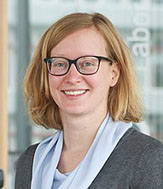
Ann-Christin Pöppler is a trained chemist with a PhD in inorganic chemistry. She was introduced to solid-state NMR through her postdoctoral experiences. After stays at the MPI for Biophysical Chemistry (Göttingen) and Warwick University (UK), she started her own research group as a Junior Professor for Organic Structural Chemistry in Würzburg (2016). Apart from sitting at the spectrometer, Ann-Christin very much enjoys teaching and training students, both in the lecture hall as well as in her workgroup.
Key Publications S. Endres, E. Karaev, S. Hanio, J. Schlauersbach, C. Kraft, T. Rasmussen, R. Luxenhofer, B. Böttcher, L. Meinel, A.-C. Pöppler Concentration and Composition Dependent Aggregation of Pluronic- and Poly-(2-Oxazolin)-Efavirenz Formulations in Biorelevant Media submitted 2021. M. Lambov, N.Hensiek, A.-C. Pöppler, M. Lehmann Columnar Liquid Crystals from Star-Shaped Conjugated Mesogens as Nano-Reservoirs for Small Acceptors ChemPlusChem 2020, 85, 2219-2229. Marvin Grüne, R. Luxenhofer, D. Iuga, S. P. Brown, A.-C. Pöppler (Inside Front Cover) 14N-1H HMQC solid-state NMR as a powerful tool to study amorphous formulations – an exemplary study of paclitaxel loaded polymer micelles J. Mater. Chem. B 2020, 8, 6827-6836. A.-C. Pöppler, M. Lübtow, J. Schlauersbach, J. Wiest, L. Meinel, R. Luxenhofer Loading dependent Structural Model of Polymeric Micelles Encapsulating Curcumin by Solid‐State NMR Spectroscopy Angew. Chem. Int. Ed. 2019, 58, 18540 –18546.
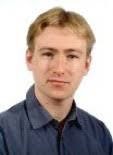
Alexey Eremin studied Physics / Biophysics at the Moscow State University and finished his PhD in Physical Chemistry in 2003 at the University Halle Wittenberg on Ferroelectric Liquid Crystals. After a Postdoc on phospholipids, he became a research associate at the Department for Non-Linear Phenomena in Magdeburg. Since 2012, he is an Assistant Professor at the University of Magdeburg, focused on soft matter physics and material science, liquid crystals, electroresponsive colloids, and non-linear dynamics. A. Eremin has been awarded the Glenn Brown Prize 2003 (International Liquid Crystal Society) and the Otto-Lehmann Prize (University of Karlsruhe 2004). He is author of more than 100 publications.
Key Publications M. Alaasar, M. Prehm, S. Belau, N. Sebastian, M. Kurachkina, A. Eremin, C. Chen, F. Liu, and C. Tschierske Polar Order, Mirror Symmetry Breaking, and Photoswitching of Chirality and Polarity in Functional Bent.Core Mesogens Chem. Eur. J. 2019, 25, 6362–6377. A. Eremin, U. Kornek, S. Stern, R. Stannarius, F. Araoka, H. Takezoe, H. Nadasi, W. Weissflog, and A. Jákli Pattern-Stabilized Decorated Polar Liquid-Crystal Fibers Phys. Rev. Lett. 2012, 109, 017801. A. Eremin, H. Nadasi, P. Hirankittiwong, J. Kiang-Ia, N. Chattham, O. Haba, K. Yonetake, and H. Takezoe Azodendrimers as a photoactive interface for liquid crystals Liq. Cryst. 2018, 45, 13–15. H. Takezoe and A. Eremin Bent-Shaped Liquid Crystals: Structures and Physical Properties Taylor & Francis Group, 2017.
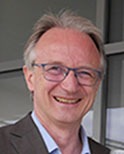
Frank Würthner received his education at the University of Stuttgart, Germany (doctoral degree in 1994). After positions at MIT, BASF central research and the University of Ulm, he became full professor of Organic Chemistry at the University of Würzburg in 2002. Since 2010 he is also the founding director of the Center for Nanosystems Chemistry in Würzburg. He has published more than 500 papers on functional dyes, dye aggregates, artificial photosynthesis, and on organic semiconductors for applications in electronics, photonics and photovoltaics. Since 2014 he is listed as a highly cited chemist. He is an elected member of the German National Academy of Science Leopoldina and the Bavarian Academy of Sciences, as well as a Fellow of the Royal Society of Chemistry. His awards include the Arnold-Sommerfeld-Prize, the Elhuyar-Goldschmidt Award, the Ta-Shue Chou Award and the Adolf-von-Baeyer Medal.
Key Publications F. Würthner Dipole-Dipole Interaction Driven Self-Assembly of Merocyanine Dyes: From Dimers to Nanoscale Objects and Supramolecular Materials Acc. Chem. Res. 2016, 49, 868–876 F. Würthner, C. R. Saha-Möller, B. Fimmel, S. Ogi, P. Leowanawat, D. Schmidt Perylene Bisimide Dye Assemblies as Archetype Functional Supramolecular Materials Chem. Rev. 2016, 116, 962–1052 M. Gsänger, D. Bialas, L. Huang, M. Stolte, F. Würthner Organic Semiconductors based on Dyes and Color Pigments Adv. Mater. 2016, 28, 3615–3645 D. Bialas, E. Kirchner, M. I. S. Röhr, F. Würthner Perspectives in Dye Chemistry: A Rational Approach toward Functional Materials by Understanding the Aggregate State J. Am. Chem. Soc. 2021, in press

Dharmendra Singh obtained his Ph.D. degree from the Department of Physics, the University of Lucknow in 2016 on Liquid Crystal-Nanocomposites. Subsequently he joined "Université du Littoral Côte d'Opale (ULCO)", France as a postdoctoral fellow where he became 2018 an associate professor at the School of Engineering and UDSMM laboratory of the ULCO. He was awarded the Young Scientist Award by the Indian Science Congress (2017, physical sciences), the best research award by the Indian Liquid Crystal Society (2012), an early career award at Cambridge University (2013), a best research award by the Korean display society (2015) and the Raman-Charpak fellowship. His research interest focus on discotic liquid crystals, organic semiconductors for photovoltaics, energy storage, light-emitting diodes, field-effect transistors, heterojunctions, quantum dots, 2D nanostructures and thermoelectric materials. He has published more than 75 research articles in international journals.
Key Publications N. Radouane, M. Depriester, A. Hadj Sahraoui, B. Ouaki, B. Escorne, B. Duponchel, D. P. Singh, A. Maaroufi J. Appl. Phys. 2021, 129, 155110. J. De, M. Devi, S. P. Gupta, A. Shah, I. Bala, D. P. Singh, R. Douali, and S. K. Pal Luminescent Conductive π-Driven Supergelator with Columnar Self-assembly Based on Triazole Modified Phenylene-Vinylene Derivative for Metal Sensing and Bio-Imaging J. Phys. Chem. B 2020, 124, 10257–10265. I. Bala, N. Singh, R. A. K. Yadav, J. De, S. P. Gupta, D. P. Singh, D. K. Dubey, J-H Jou, R. Douali, and S. K. Pal Room Temperature Perylene Based Columnar Liquid Crystals as Solid-State Fluorescent Emitters in Solution-Processable Organic Light-Emitting Diodes J. Mater. Chem. C 2020, 8,12485-12494. A. Shah, B. Duponchel, A. Gowda, S. Kumar, C. Legrand, R. Douali, D. P. Singh Charge transport in phenazine-fused triphenylene discotic mesogens doped with CdS nanowires and their current-voltage characteristics for ITO-DLC-Au heterojunction New J. Chem. 2020, 44, 14872. P. Mahesh, A. Shah, K. Swamynathan, D. P. Singh, R. Douali, S. Kumar Carbon dots dispersed hexabutyloxytriphenylene discotic mesogens: Structural, morphological and charge transport behavior J. Mater. Chem. C 2020, 8, 9252-9261. K. Kondratenko, Y. Boussoualem, D. P. Singh, R. Visvanathan, A. E. Duncan, N.A. Clark, C. Legrand, A. Daoudi Molecular p-doping in organic liquid crystalline semiconductor: Influence of the charge transfer complex on the properties of mesophase and bulk charge transport PhysChemChemPhys 2019, 21, 8686-18698.
1) Introduction (Lehmann) Keywords: Liquid Crystals the fourth state of matter, history, classes of liquid crystals (thermotropic, lyotropic, colloidal, barotropic etc.), omnipresence of LCs in daily life, fluidity, anisotropy, birefringence, LCD application, stimuli responsive matter, overview on basic methods for studying LCs properties (DSC, POM, XRS). 2) Synthetic Methods for Mesogen Synthesis - A Practical Approach (Detert) Keywords: synthesis, CC-coupling, heterocycles, calamitic and discotic liquid crystals, purification, chromatography. 3) Liquid Crystal Design - Impact of Nanosegregation, Space-Filling, Entropy (Lehmann) Keywords: Nanosegregation and space-filling, multi-color tiling, chains for nanosegregation (aliphatic, oligoethylenoxy, siloxane, cyclic siloxane, branching, flying seeds), generation of intrinsic free space, void and structural control, spacer and entropy. 4) Lyotropic Liquid Crystals (Gießelmann) Keywords: Hydrophobic effect and micelle formation, packing parameter, generic lyotropic phase diagram, hexagonal and lamellar phases, nematic and cholesteric phases, applications and biological relevance. 5) Colloidal Liquid Crystals (Lagerwall) Keywords: definition of colloids, colloidal stability/instability, nonionic and ionic stabilization, ionic strength, Onsager theory of colloidal nematics, nematic-isotropic phase coexistence, particle size dispersity and fractionation driven by liquid crystal formation, gelation and kinetic arrest. 6) Thermotropic Properties and Stability of Liquid Crystals (Lehmann) Keywords: Details on DSC, Thermogravimetry, decompostion of liquid crystals, stability of conjugated materials, stability versus stable radicals, oxygen, etc. 7) Optical Investigations of Mesophases (Lehmann) Keywords: Polarised Optical Microscopy (POM), orthoscopy, conoscopy, birefringence and the alignment of LC, director fields, usage of compensator plates, importance of shearing and rotation, crossed and uncrossed polarisers. 8) Study of Liquid Crystals with X-rays 8.1) Basics (Friedrich) Keywords: Crystal Symmetry, Real and Reciprocal Space, Miller Indices, X-ray Diffraction, Bragg's Law. 8.2) SAXS (Lehmann) Keywords: SAXS, WAXS, GISAXS, Modeling, electron density reconstruction (2D), Fibre simulation of XRS pattern. 8.3) 3D Liquid Crystals (Zeng) Keywords: diffraction from single crystal and oriented samples, indexing and determination of space groups, electron density reconstruction (3D), micellar, bicontinuous, liquid quasicrystals 9) Solid-State-NMR Methods to investigate complex soft Materials (Pöppler) Keywords: Fundamental principles of NMR spectroscopy (1 and 2D), introduction to solid-state NMR including relaxation, interactions in solids, typical experiements and requirements, applications to liquid-crystalline materials and challenges. 10) Mechanical Properties of Liquid Crystal Materials (Eremin) Keywords: elastic constants, rheology, thin films, pattern formation, director instabilities. 11) Polar Properties of LCs and ferroelectric LCs (Eremin) Keywords: Ferroelectrics, electrooptical switching, dielectric properties, cluster phases, bend-shaped liquid crystals, chirality. 12) Modern Exciton Theory and Self-Assembly (Würthner) Keywords: Dye aggregates: Theory of pi-pi-stacking interactions, Self-assembly in solution, structure of dye aggregates, exciton coupling in dye aggregates, luminescent dye aggregates, functional thin films based on dye aggregates. 13) Application of Liquid Crystals beyond Liquid Crystal Displays (Singh) Keywords: nondisplay applications, photovoltaics, energy storage, OLED, OFET, Lens like applications. 14) How to present Scientific Results: A preparation Class for the upcoming liquid crystal meeting, Short Poster Appetizer, Poster, Talks (Lagerwell, Lehmann, Pöppler) Keywords: coming soon
Click here to view the tentative course schedule.
All presentation slides will be made available in pdf form. Participants will recieve information on accessing these files closer to the course dates.
There will, however, be no recordings of the lectures themselves nor are you allowed to record the sessions yourself.
Further information such as meeting links will be made available closer to the course dates.
All students will be offered a scholarship which covers your registration at the University of Wuerzburg as well as the registration fee for the GLCC 2022. Please return your signed Declaration of Acceptance of Scholarship form as part of your application to confirm your scholarship. The scholarship will be directly applied to your participation fees - you will receive niether a bill nor the scholarship funds directly.
The Faculty will cover the registration fee for the GLCC 2022 in Würzburg for participants in the course, however, all other costs associated with attending the conference (airfare, hotel, etc.) will be the responsibility of the student.
Plesae note the English version of the Declaration of Accpetance of Scholarship is intended solely as a convenience to non-German-reading applicants. Any discrepancies or differences that may arise in the translation of the German version are not legally binding.
Application Process
Step One
Gather the following documents and upload them in the application form below:
- a signed and completed Application Form*
- copies of your high school education certificate as well as your Bachelor Degree and university transcript (if not available in the Latin alphabet, an authenticated translation into either German or English is required)
- a copy of your passport or, if you are an EU citizen, a copy of you national ID (if not available in the Latin alphabet, an authenticated translation into either German or English is required)
- a brief, but complete CV
- a signed and completed Declaration of Accptance of Scholarship (see Financial Information for more information)
PLEASE NOTE: All forms must be signed with an original signature. We cannot accept digital signatures of any kind. We apologize for the inconvenience.
Application Deadline: August 31, 2021
All documents must be in PDF form and no larger than 10 MB. Please include your first and last name in each file name.
* The course is listed as a Bachelor course only as a bureaucratic measure to ensure the easiest possible registration process. The course will be taught at a Ph.D. level, so Doctorate students and Post Docs are encouraged to apply.
Step Two
Once your documents have been checked, you will be emailed instructions on how to complete your enrolment online. At the end of this brief online form, you will be able to download your Application for Enrolment. Please send your signed Application for Enrolment and proof of health insurance in Germany or another EU country to Rachel Steinhaus at vcc@uni-wuerzburg.de.
Information regarding the personal data of applicants and participants:
In order to plan and conduct this Virtual Chemistry Course we need to collect certain personal data. By submitting your application, you give your consent to the collection of the personal data you have provided us with in accordance with Art. 6 1. 1 (a) of the EU General Data Protection Regulation (GDPR) of 27 April 2016. A notice in accordance Article 13 of GDPR regarding the use of personal data specifically for this program can be found, in German, here. The consent may be revoked at any given point in time. Personal data provided by you before and during this Virtual Chemisty Course will be deleted after the course and the administration it entails has been completed. Further information about the data collected can be found on the university website.
Representative of the JMU Würzburg:
The University is represented by its current president.
Julius-Maximilians-University Würzburg
Am Sanderring 2
97070 Würzburg
Data protection officer:
Data protection officer of the Julius-Maximilians-University Würzburg
Sanderring 2
Tel. 0931/31-0
datenschutz@uni-wuerzburg.de
Plesae note the English text here is intended solely as a convenience to non-German-reading applicants. Any discrepancies or differences that may arise in the translation of the German version are not legally binding.

